For every business, time is money. Moreover, especially with an E-commerce business where consumers can sign up, inquire, or even purchase something any time of the day, marketing automation becomes a must. With the latest trends in marketing technologies, you have more time to focus on growing your business, nurturing your leads, and creating better products.
Fortunately, automating your E-commerce business in 2020 is now a breeze, primarily when you use the right tools and strategies. Save your business precious time by using these ten marketing automation tips.
Table Of Contents:
1. Segment customers based on buying behaviours
2. Create a Welcome Email workflow
3. Retarget abandoned carts
4. Send reminders
5. Offer discounts based on engagement levels
6. Follow the rule of 7 in lead nurturing
7. Use exit-intent pop-ups
8. Utilize messenger bots
1. Segment customers based on buying behaviours
If you run an E-commerce business with multiple products and services, it’s important to note that not all your customers will be interested in everything you have to offer.
And for this very reason, one of the best marketing automation practices for a business is sending only relevant communications to specific users with the help of segmentation. You can achieve this by segmenting subscribers based on their purchase behavior.
For example, if your online shop for moms sells stationery products as well as baking needs, you’ll want to segment subscribers by their interest. This way, you’re able to send relevant emails, promotions, or even updates about each category, to a specific set of users without annoying your other segments.
2. Create a Welcome Email workflow
Now, whenever a visitor signs up to be on your email list, be sure you make them know how thankful you are that they took the time to sign up.
Get an email marketing provider that lets you automate emails to your subscribers. You can even choose to give a special bonus or discount on your store to your new subscribers to instantly make them do some purchases.
See how Kate Spade sends a beautifully-designed welcome email to their new subscribers while offering an exclusive 15% off their online store. Note that the design has the image of an envelope, giving it an almost personal feel.
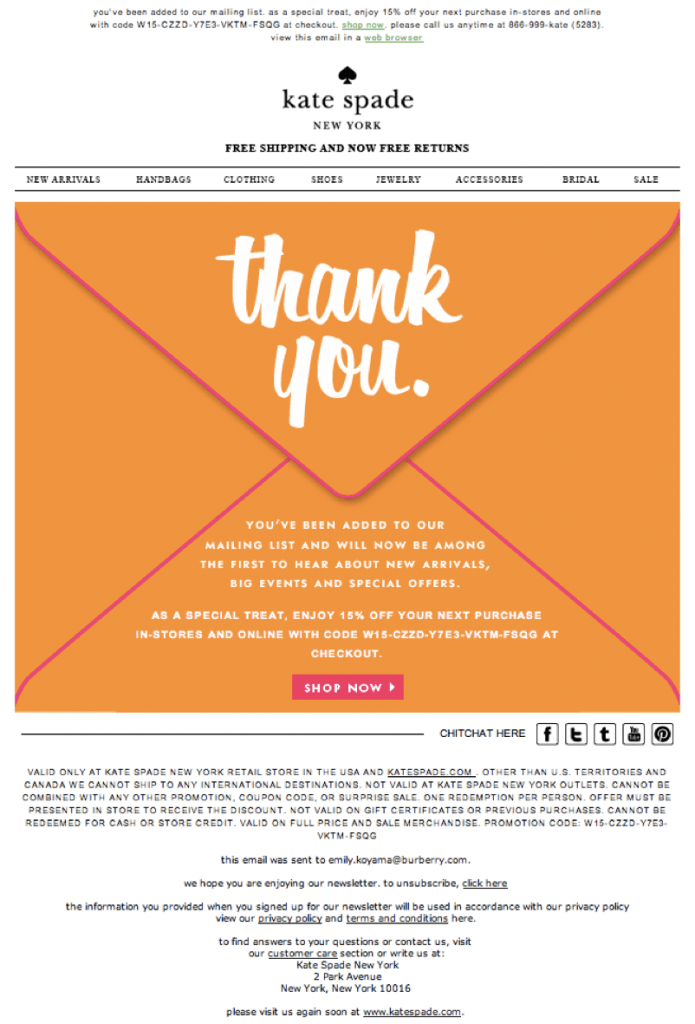 Kate Spade Welcome Email
Kate Spade Welcome Email
3. Retarget abandoned carts
Less than 3% of E-commerce website visitors convert into customers on their first visit. But that’s not the most worrying statistic. According to this report, although a huge chunk of E-commerce browsing happens on the mobile – almost 53%, most people still go to the web to complete their purchases, marking the revenues at just 32%.
And apart from the more common-sense reasons of extra charges of shipping/taxes, need for creating an account, complicated checkout process, etc., for cart abandonment, a very simple and painless answer (for your consumer, of course) could be “I forgot”. Causing your entire world to come crashing down.
Why? Because according to this report, E-commerce brands lose $18 Billion in Sales revenue each year, due to cart abandonment.
You can recover these lost leads by sending targeted follow-up emails when users abandon their carts and use PPC ads to stay top of mind.
“Always remember to optimize your cost-per-click (CPC) bids and constantly push for better click-through rates (CTRs) to ensure you’re always getting the best bang for your buck with your ad spend.” – Aaron Haynes of Loganix
For mobile, which sees even higher cart abandonment rates – 85.65% as opposed to 73.07% for desktop, push notifications can come really handy.
The most absurd reason, as I said, is people can forget that they’ve items saved in their carts. But that happens. And reminding them of these saved items, maybe even enticing them with some discounts on these items, can go a long way in recuperating some of that lost revenue.
Bonus Read – 3 Reasons Why Customers Abandon Shopping Carts Online
4. Send reminders
When you’re running a campaign, whether it’s a sale or limited time offers, chances are not all your subscribers saw your first, or even second, communication. Even if they did, they might not have made a purchase right away.
While there’s every chance that your leads aren’t interested in your offer at all, but it might also be that they didn’t have the time to go over your offer altogether.
Send a series of targeted communications – email and web push for desktop users and mobile push notifications for mobile users, to touch base with prospects who haven’t converted into buyers yet. Some people just need a tiny nudge. Subscribers who also may have forgotten to purchase will even thank you for the reminder since they might have wanted to take advantage of the great offer before it expired.
5. Offer discounts based on engagement levels
Your loyal customers deserve to know how much you value them. So to reward them for their patronage, offer special promotions and discounts just for them by making loyal customer segmentation. You can send in mails like in the below example or can send in push notifications for your app users.
Just remember that mails carrying promotional content might get blocked by email servers, so it might be a better option to use push notifications sometimes as well.
Alternatively, you can also re-engage cold subscribers who haven’t purchased in a long time with their discount. See how Gap does it – and with an excellent, compelling copy too.
 Gap Customer Recovery Email
Gap Customer Recovery Email
6. Follow the rule of 7 in lead nurturing
Have you heard of the rule of 7? In marketing, this rule states that any lead has to see your offer at least seven times before they turn into a customer.
Especially now, with marketing automation, you’ll need to regularly follow-up with your leads to be sure they become aware and convinced that your offer is the best for them. So of course, you have to do this in a way that doesn’t annoy your prospects into unsubscribing.
You’ll need the right tools to execute a complete lead nurturing campaign. Be sure to invest in the right marketing stack that helps you capture and manage data to help turn visitors into leads, leads into customers, and customers into loyal fans.
7. Use exit-intent pop-ups
Because people rarely make a purchase the first time they land on your online store, you can entice them to buy now (or a little later) by offering a discount if they sign up to your email list. Some marketing automation tools detect exit intent or the moment when users are about to exit your site or switch tabs.
An exit intent pop-up with an exclusive offer at the very least turns visitors into prospects, and eventually, those prospects may convert into paying customers.
See how J.Crew makes use of an exit intent pop-up in their own marketing automation.
 J.Crew’s Discount in an Exit Intent Pop-up
J.Crew’s Discount in an Exit Intent Pop-up
8. Utilize messenger bots
People these days are busy; not everyone can spend time looking through your site to find information about your products. Help eliminate that extra step by employing messenger bots to answer frequently asked questions about your product or service.
Depending on the type of bot your E-commerce business decides to use, some bots may have their questions pre-programmed, or users can type in queries, to which your bot can present relevant search results based on keywords.
Here’s WebEngage’s bot to give you an idea of how useful bots can be for marketing automation. No need to get somebody to respond to customer queries in real-time.

WebEngage Bot
Wrap up
Marketing automation saves your E-commerce business time and energy. Instead of assigning your people to execute tasks like following up on cold leads or asking frequently asked questions, you can rely on the right E-commerce automation systems to help you make more time for what matters. You can also learn from top E-commerce brands on how they leverage B2C marketing automation to make their campaigns more effective and engaging.
Make the most of marketing automation to help deliver seamless, relevant, and useful content or promotions to your prospects. It can also support you to nurture your relationship with them and turn them into loyal customers for years.
Bonus Read – 15 B2C Marketing Automation Examples (That Work)





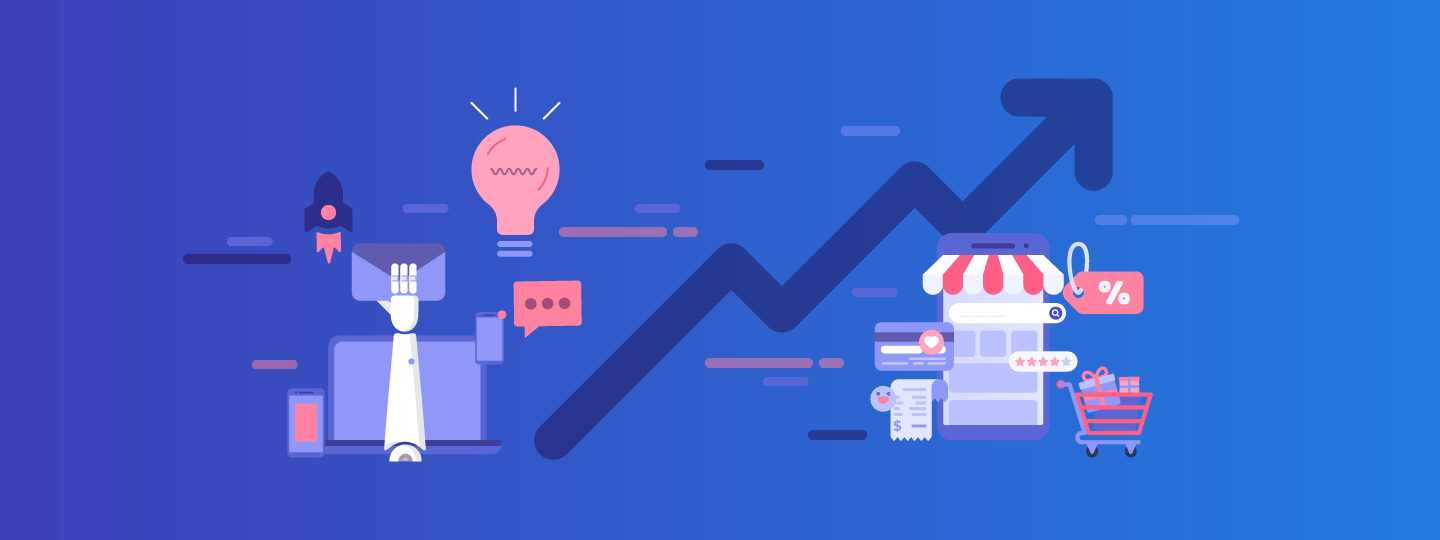

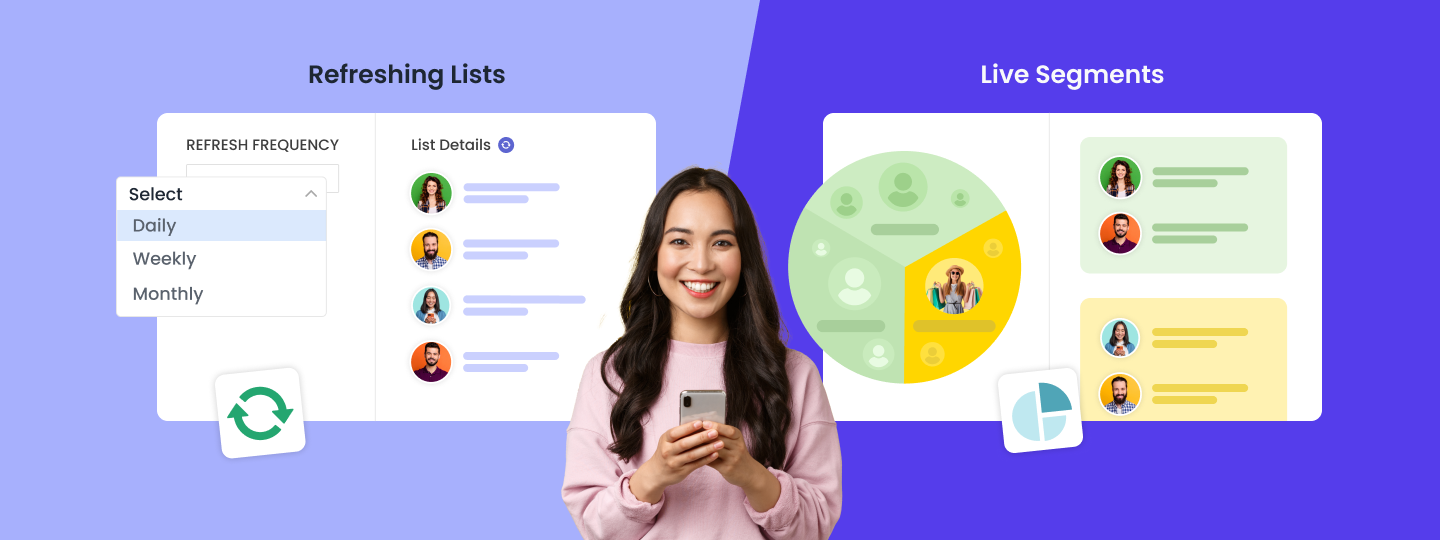
 Harshita Lal
Harshita Lal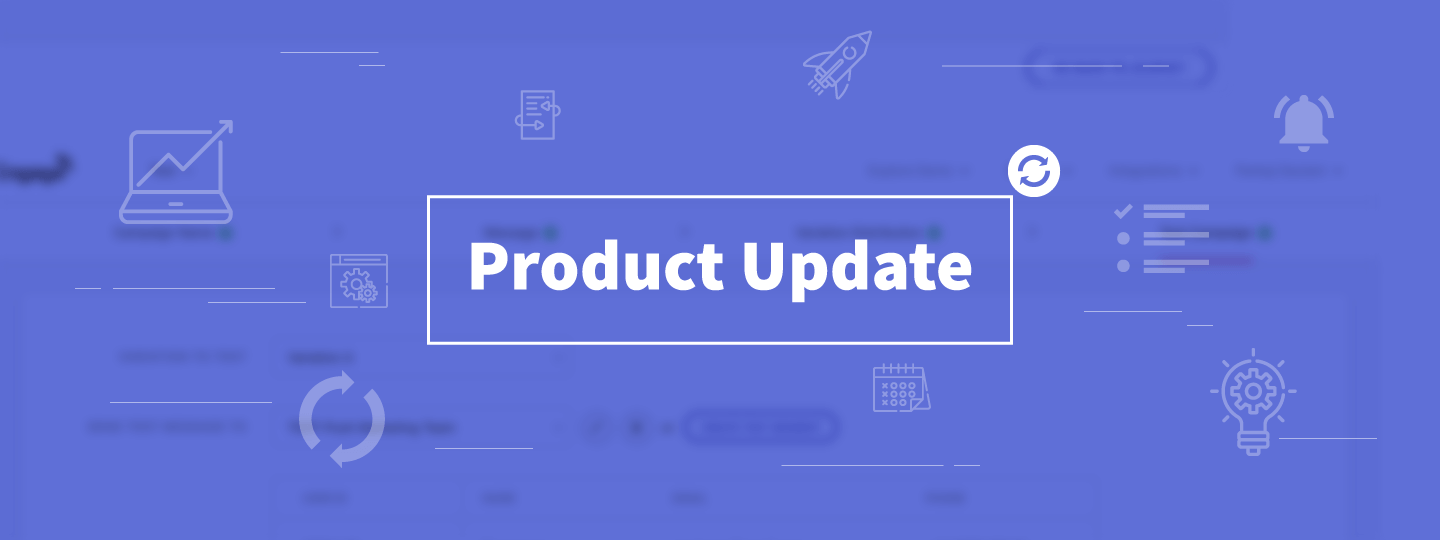
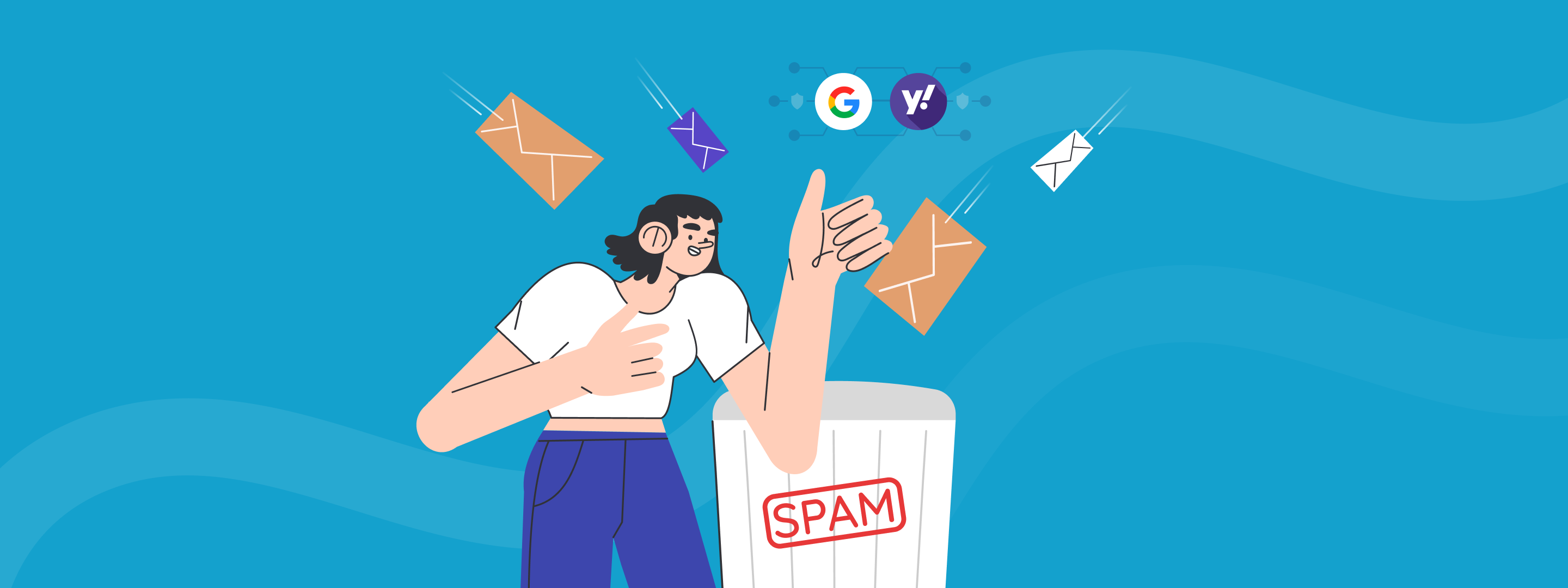
 Sanjay Mishra
Sanjay Mishra